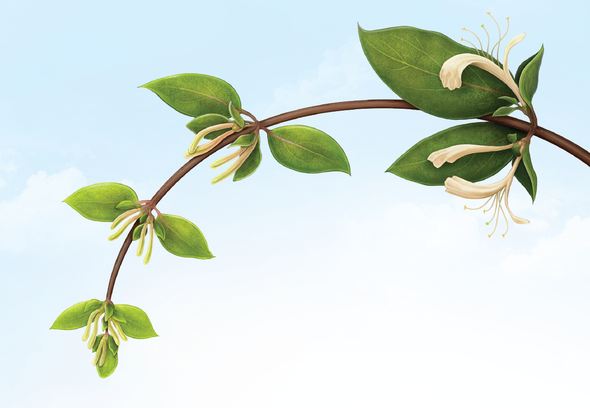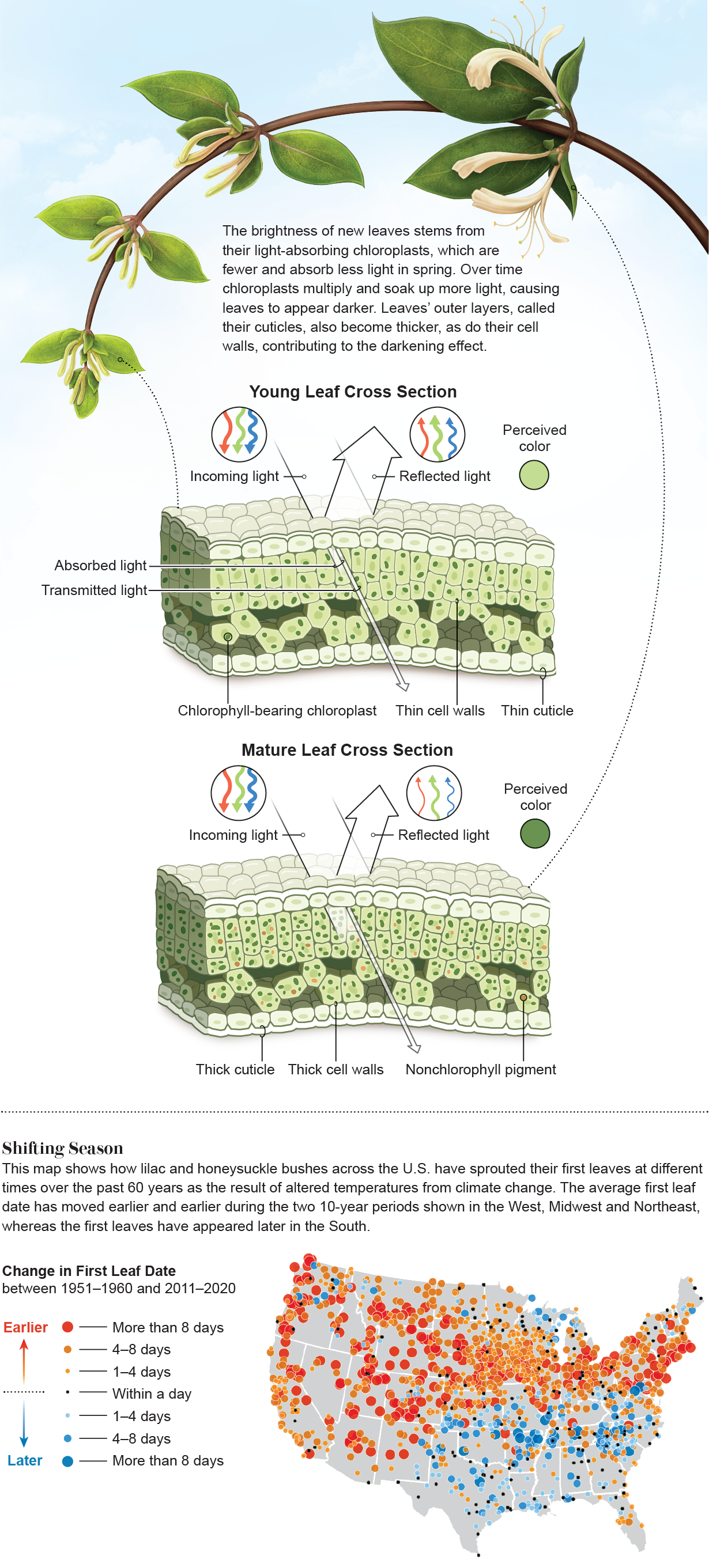Spring’s burst of brightness comes before chloroplasts grow and mature

Every year trees put on a show in the spring by bursting with bright foliage that seems to celebrate the end of winter. What makes these early leaves so vibrant? The color of a leaf is determined by which wavelengths its cells absorb and which they reflect back at us. The chloroplasts inside these cells, which turn sunlight into energy through the process of photosynthesis, tend to absorb more blue and red wavelengths and less green light. Changes to the number and maturity of chloroplasts within a leaf, as well as to leaves’ structures, cause the leaves to appear lighter in the spring and darker later on. “The time it takes to go through this maturity cycle is a couple of weeks at the start of the summer,” says Susan Ustin, an ecologist at the University of California, Davis.

This article was originally published with the title “The Science of Spring Green” in Scientific American 328, 3, 78 (March 2023)
doi:10.1038/scientificamerican0323-78

